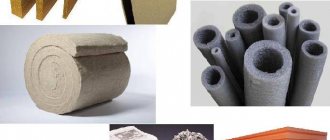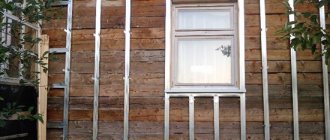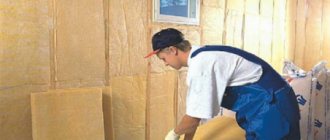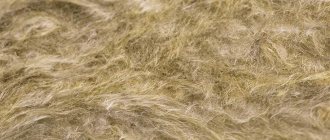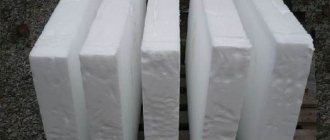How to properly glue self-adhesive insulation for windows
Statistics say that due to poor window insulation, up to 40% of the heat from the room is lost. Such waste in times of rising resource prices is unacceptable, because almost half of the money in this situation goes to useless heating of the street.
Several decades ago, the most popular window insulation was in the form of paper strips. The cracks were first sealed using pieces of cotton wool or scraps of fabric, and paper was glued over this area. However, technology has gone far ahead, so this technique is practically never found in practice. Today, window insulation has become more advanced, easier to apply and visually attractive, which could not be said about ugly paper tapes.
Disadvantages of window tape
Of course, a properly insulated frame will help maintain warmth, coziness and a comfortable atmosphere in the house. However, there are a number of minor disadvantages to window tape that are worth being aware of. The most common ones include:
- Minor difficulties associated with removing the tape after the cold season. This simple task can be easily fixed with regular warm water.
- The possibility of the tape peeling off from the surface of the window frame, which occurs due to improper installation. This can be avoided by following the instructions, especially regarding degreasing the work surface before applying adhesive tape.
- It is not recommended to apply the tape at low temperatures, as there is a possibility of the sticky layer peeling off from the surface of the frame.
- In modern metal-plastic windows, the operation of the mechanism for opening and closing the sashes may be disrupted. The best option for use is a wooden frame.
- After use and dismantling, the tape becomes unusable a second time and you will need to buy a new one.
Rice. 4. Other methods of window insulation may leave marks after dismantling.
Classification of materials
You can correctly use insulation for wooden windows yourself without outside help. Most materials are designed in such a way that their application requires little or no specialized tools.
There are a lot of options for insulating windows today.
On the shelves of specialized stores there are varieties of materials:
- foam insulation for windows;
- rubber insulation tape for windows;
- polyurethane;
- polyethylene foam;
- insulation for PVC windows (polyvinyl chloride).
Also, finished products are differentiated according to the method of application:
- self-adhesive insulation for windows;
- insulation for windows for the winter, fixed using glue.
A tubular seal made of rubber is in demand. This material can be used repeatedly if necessary. An additional convenience is the ability to open windows during cold periods, since the material is glued to only one of the mating surfaces, unlike tape or paper.
Rubber tubular seal
And this is how it is fixed in the frame
Necessary conditions for insulation
To ensure the reliability of the work performed, a number of important conditions will need to be met. Before gluing window insulation, it is necessary to thoroughly wash the surface to be treated from dust and dirt. If necessary, replace cracked glass, because cold air can also be blown in through these cracks.
It is advisable to carry out all sealing work at positive temperatures in order to preserve the ductility of the materials used.
If the glass is not securely fixed, then it must be “seated” with silicone sealant. This will have an additional positive effect, since the glass will stop “siphoning”, which is already +5% in terms of heat retention in the house.
VIDEO: Insulation of window frames
Choosing the right material
Those wishing to use self-adhesive insulation for rubber windows must select a softer texture. This material, unlike hard material, will provide better penetration into all crevices, and it also has lower thermal conductivity. In addition, it is more problematic to work with hard materials.
The use of self-adhesive insulation for plastic and wooden windows helps to increase the speed of work. Simply remove the protective layer and apply the sticky side to the desired location.
When using materials without a sticky surface, it is recommended to use silicone insulation (sealant) for windows. It will withstand moisture from condensation and also has a plastic structure.
How to apply silicone sealant
For ease of application, purchase a sealant gun. Such a purchase costs about 200-300 rubles, but it will provide significant help.
Application of thermal insulating film
A practical material is insulating film for windows. It is applied both from the outside and from the inside. Despite the relative high cost of the material, it demonstrates excellent results in terms of energy saving.
As a type - energy-saving window film
Experts recommend installing energy-saving film on the inside of the window to achieve the best effect.
During application of the film, its uniform tension is ensured over the entire surface. A slight sagging of any area can lead to ruptures during a sharp gust of wind. You can get rid of the damage using tape.
More durable brands of films, also used in greenhouse farming, have a yellowish tint. They are able to withstand large temperature changes with virtually no change in their characteristics. They can also be used repeatedly, which will compensate for their increased cost relative to other brands of material.
To attach the film, use the following options:
- using a stapler directly to the frame;
- stuff wooden planks on top of the film with small nails;
- use nails with wide heads or place a strip of roofing felt or leatherette rolled up several times under them;
- fastening is carried out with paper clips.
Instead of film, you can use transparent polyvinyl chloride. The material is environmentally safe and does its job well.
Using a sealant
It is easy to find material for seals in hardware stores. Visually, they look like a tape with an adhesive layer on one side. The base consists of polymer or foam rubber. Polymers make it possible to tear off the sashes without any problems, as well as use water to clean the surface. When water regularly gets on foam rubber, the material quickly deteriorates and cannot withstand use for more than one season. It needs to be replaced by next winter.
Gluing the tapes is very simple. It is enough to cut the workpiece to the required length and then remove the paper protection from the adhesive side. It is glued both to the window frame and to the stationary part of it. This will provide reliable protection against cracks.
Fighting large cracks on an old frame
Since gluing self-adhesive window insulation in the presence of large cracks will be ineffective, in this situation an additional procedure is carried out to seal the cracks. The cavities are filled with the following materials:
The best way would, of course, be putty, which completely fills the space and does not leave cold bridges. Depending on the size of the crack, the density of the putty can be from liquid - for small cracks, to thick and viscous - for large cracks that need to be sealed.
The surface must first be cleaned of dirt in order to subsequently ensure good sealing. A retaining layer of tape or strips of paper is glued over the closed gap, which is attached to water-soluble glue, for example, PVA.
Working with plastic windows
Insulation for plastic windows is also in demand. In case of initial installation of high-quality materials, it can withstand up to 5 years of reliable protection. After this, the connections may be subject to depressurization.
During diagnosis, you can solve some problems yourself, however, you should clearly identify the cause of the problem:
- when the rubber on the sash has worn out, it needs to be replaced;
- a frame with a slope can also become depressurized, which can be solved by removing the slopes and sealing the resulting seams;
- If shrinkage of the building has occurred, then we carry out adjustment work with the fittings.
High-quality components are used so as not to carry out repairs every season.
VIDEO: Insulating doors and windows using sealant
How to glue
After selecting a certain insulation, all that remains is to glue it correctly. To do this you need:
An important point: the insulation should be glued in a single piece, and not in cut strips. This will ensure the best adhesion of the tape to the surface.
Complete adhesion occurs after 2 hours. To check the window for gaps and omissions, you can bring a lighter or candle to the insulation areas. If the flame does not fluctuate, then the insulation is glued correctly and there will be no heat loss. If any breakdowns are detected, the tape should be re-taped.
Related article: Asymmetrical curtains for a window with a balcony door
On the video how to glue self-adhesive insulation for windows:
With self-adhesive window insulation, you can minimize heat loss in the room in a short time and create a comfortable indoor microclimate. The main thing is to carry out work on thermal insulation of windows on time - in early autumn, when the weather is quite warm.
What is a sealant for wooden windows
This material allows for a tight fit of window or door elements to each other. It is made from silicone, rubber, PVC, and other elastic raw materials. The use of seals in wooden windows significantly increases the thermal insulation and sound insulation of the building.
As a rule, the seal is a rubber strip of various shapes, which can be on a pliers basis or without it. Currently, the following types of seals are available on the building materials market.
- Self-adhesive. A rubber tape made in the form of the Latin letters D, C, E, V with an adhesive applied on one side. For installation, it is enough to remove the sewn tape from it and glue it to the place required for sealing. The disadvantage of this type is the poor quality of the adhesive base, which after some time loses its properties.
- Without adhesive backing. It is also a rubber tape of the same shape as self-adhesive, but without an adhesive base. This seal is fastened using frost-resistant and moisture-resistant glue. When choosing glue, it is important to purchase a certified and branded product. Otherwise the seal will come off.
- Seal with fastening in the groove . It is made of rubber in the form of a tape and also has various shapes; its distinctive feature is the fastening element, which is inserted into a pre-prepared groove along with the seal. The advantage of this type is that no adhesive is required, but at the same time you need to cut grooves for installation.
- Silicone. Refers to liquid seals, preferably used on windows that will not be opened during the sealing period. This type has high tightness and thermal insulation. Also, using this liquid base, you can install glass in wooden frames for better sealing.
Each type has its own advantages and disadvantages depending on the design of the window and how it is used.
Why is gray window seal attractive?
Gray window seals are still an unusual novelty on the window components market for many buyers. The usual monopoly of the black sealant is beginning to lose its position, since the attractiveness of gray sealants for windows is in many cases obvious.
The technical characteristics of the two types are also not very different, since they are based on ethylene-propylene rubber. The difference is that during the production process, soot is added to the traditional window seal, which provides the color that has become familiar. Gray window seal - has highly active silicates instead of soot, which makes it different from its “brother”.
But this is not the only difference. The presence of soot makes the seal more elastic, so you don’t have to exert much force when closing the window. At the same time, in the growing debate about which window seal to choose - black or gray, the attention of buyers is increasingly focused on the design side of the issue, since:
- windows with gray seals look better, especially if this color is combined with the color of the window profile;
- According to the manufacturer, the new product requires less maintenance during window operation.
Let these statements remain on the conscience of the manufacturer. After all, window seals of traditional colors have been produced for a long time; the technology has been established and tested over decades of successful production and constant consumer demand.
Moreover, new products are also offered to customers - self-adhesive seals, which allow thermal and waterproofing of windows without calling a specialist and additional costs.
How to choose a seal
Before insulating a window, you need to choose a product based on how it will be used at the time of sealing. When choosing a sealing material, you should pay attention to the following aspects.
- It is necessary that it have a high degree of frost resistance and moisture resistance.
- Resistance of raw materials to compression during active opening and closing of the window.
- The size of the seal should be optimal, that is, not exceed the sealing area and not be smaller than it.
- The adhesive on the material (self-adhesive) must have water-repellent properties.
As a rule, two types of seals are used for wooden windows such as:
- Silicone seal. The elastic type of raw material is widely used in medicine and the food industry. Also, this type is non-toxic and has high moisture resistance. There are two types of silicone sealant.
- Liquid silicone. It is produced in plastic containers and applied to the surface using a special gun. This type of seal can be used when installing glass or sealing wooden windows that are not planned to be opened. You can also glue a rubber seal with liquid silicone, as it has adhesive properties.
- Rubber silicone. Produced in the form of flat strips of various shapes. Used to seal doors and windows of various types and types. It has high water resistance and tightness.
- Self-adhesive seal. Rubber or silicone tape of various shapes, having a layer of adhesive for fixation to any surface. The disadvantage of this type is the poor quality of the glue, which after a certain time loses its adhesive properties and may lag behind the surface.
The types of sealing materials described above can be used for wooden and plastic windows and doors.
Types of sealing materials for windows: how to learn to distinguish?
In addition to the fact that the seals may differ in color, the differences between them may lie in the material used at the production stage, as well as other properties and qualities, which are worth talking about. It is worth knowing about the types of seals for plastic windows that exist today.
More on the topic Self-expanding sealing tape Psul
Installation
To install the seal, you do not need to have any specific knowledge or skills; just prepare the installation site and stick it on. You will need the following tools for installation.
- Penknife.
- Silicone glue gun (if a non-self-adhesive sealant is used).
- Silicone glue (if a non-self-adhesive seal is used).
- Alcohol or any other degreasing material.
- A piece of clean cloth.
After all the necessary things have been purchased, you can begin installing the sealing tape on wooden windows. This process consists of the following steps.
- It is necessary to open the windows and clear the installation site of dirt and debris.
- The cleaned installation site is degreased with alcohol or other means.
- If a self-adhesive seal is used, then it is necessary to remove part of the sewn-in film of the adhesive coating and glue part of the sealing material to the window frame. Gradually removing the sewn film from the seal, it is necessary to glue it around the perimeter. If the seal is not covered with adhesive, the pasting area must be coated with liquid silicone using a gun.
- The joints of excess material are cut off with a penknife.
After the entire gluing process is completed, you need to check how the window closes and whether there is an excess section of the seal. When choosing a material, it is not recommended to choose something much thicker than necessary, since there is a possibility that the door or window will not close. The seal can be installed either on the stationary part of the window or door or on the movable part, this will in no way affect the quality of the seal.
Swedish method of insulating windows
Another way to insulate a window structure, labor-intensive, but more reliable than the previous two, is the groove method (Swedish technology).
The groove method of window insulation is the most reliable
The sashes need to be removed from the frame; a chamfer is selected along their perimeter using a milling cutter at an angle of 45 degrees in the direction of the flashing.
The chamfer is selected with a milling cutter at an angle of 45 degrees
In place of the loops, an untouched gap is made three centimeters larger than the size of the loop.
The groove should be thoroughly cleaned of any remaining shavings and sawdust.
The rebated insulation is installed into the chamfer and pressed into place. To do this, you need to buy a special roller, which will greatly facilitate this process. Do not stretch the insulation tube by moving the roller in one direction; it must be moved back and forth.
When installing the tape, the roller cannot be moved in one direction.
The sashes are installed on the frame structure and the quality of the seal is checked by closing the window.
After installing the seal, you don’t have to worry about the cold in winter; in addition, the seal will perform soundproofing functions.
Replacing the seal on wooden windows is simple: the tape is removed from the structure, the places where it is located are cleaned and degreased, the frame is ready for installation of a new sealing tape.
Replacing the seal of wooden windows
Like everything in our world, the seal does not last forever and after a certain period of time it wears out and ceases to perform its original functions. If the sealing material is worn out, it should be replaced with a new one. The replacement process consists of the following steps.
- Removing the old seal.
- Cleaning residual glue or silicone from old material.
- Degreasing the cleaned area.
- Installation of new material.
The sealing material is replaced not only in case of mechanical damage, but also after its service life has expired, since the material shrinks and does not provide the original effect.
Therefore, it can be summarized that with the help of a sealant it is possible to increase the thermal insulation of a building without spending a lot of money and time. This material can also be used to restore old wooden windows or doors.
Insulation with adhesive tape
The insulation technology is not very complicated. First of all, it is necessary to follow the sequence of work.
Plastic windows
Insulation is carried out in the following sequence:
- pre-removed old insulation is used, firstly, to purchase similar material, and secondly, to pre-cut the old material to size.
- gluing begins from the top of the window. As you progress, the protective layer is removed in small sections, and the tape is pressed tightly.
More details in our video:
1. The pasted tape should not have many tears.
2. In the corners the tape is not cut, but wrapped.
Wooden windows
For these windows, in addition to adhesive tape, thin foam rubber is often used. The work is performed in the following sequence:
- strips of foam rubber are cut along the window opening;
- cut foam rubber is placed between the frames;
- The tape is cut to the size of the window;
- The tape is applied with a sticky layer to the foam rubber and smoothed with a napkin.
This insulation will last up to three years. But it’s better to do it as shown in the video:
How to choose and install self-adhesive window seals yourself
Owners of apartments, cottages and houses are often faced with the need to replace sealing materials on windows and doors. With frequent use of such structures and constant exposure to external factors, gaskets lose their properties and appearance.
In such a situation, people have to install self-adhesive seals for windows and doors on their own, which can be made from different raw materials.
What it is: description
The main materials from which insulation is made are rubber, PVC, foam rubber and polyethylene foam. An adhesive composition, protected with special paper, is applied to one side of the insulating tape. When applying insulation, the paper is removed.
Insulation materials are supplied in the form of cut strips, combined into reels, or in the form of formatted rolls.
Rubber
They are distinguished by the lowest price among analogues. They retain heat effectively and are attached using glue or a stapler. One of the disadvantages is poor resistance to moisture: when water gets on the rubber, the material quickly peels off.
If you buy rubber insulation, then the softest one. Rigid models do not adhere well to the window and allow heat to pass through.
Polyvinyl chloride
Reliable and environmentally friendly insulation, which has good frost resistance and resistance to deformation.
When choosing, it is important to pay attention to the rigidity of the product: overly hard models will not adhere well to the surface. Service life is 2-3 years
Foam rubber
Safe to use and reliable insulation. In addition to thermal insulation, they provide good protection from extraneous sounds. Foam insulation is supplied in the form of strips. The advantages of such seals include low cost and provision of air flow for the room.
However, in terms of thermal insulation, foam rubber is significantly inferior to PVC and polyethylene foam, plus it peels off from the surface quite quickly.
Figure: the shelf life of foam rubber is 1-2 years.
Polyethylene foam
They are bundles made of foamed polyethylene. They retain heat perfectly, provide sound insulation and even protect against moisture on the balcony. The most expensive insulation materials among those presented. Service life – 3-5 years.
Benefits and Features
The advantages and technical characteristics of self-adhesive insulation include:
- Frost resistance. Depending on the material from which the insulation is made, its thermal conductivity coefficient varies. However, for all of them it is at a high level: after application, the tape will maximally limit the contact of the room with the environment and prevent the appearance of drafts and cold bridges.
- Versatility. The insulation is suitable for cracks up to 7 mm wide.
- Reliability. The material is not afraid of temperature changes, moisture, and chemical influences.
- High-quality sound insulation. Most types of insulation can not only protect the room from frost, but also from extraneous sounds.
- Environmentally friendly. The materials do not come into contact with the environment or react with chemicals. Insulation materials are absolutely safe for human health.
- Convenience. Once applied, the insulation will not interfere with closing and opening windows. And the installation process itself will not require the help of specialists: the owner of the house will be able to insulate the window on his own.
- Low cost. Compared to other methods, self-adhesive insulation has an optimal combination of price and quality.
- Variety of colors. Among them are white, black, dark brown, which allows you to choose the material to match the windows, ensuring a harmonious appearance of the finished structure.
- Fire safety. The materials from which insulation is made are low-flammable and difficult to ignite.
The video shows self-adhesive foam insulation for windows:
One of the disadvantages of insulation is its fragility - the material is enough for one or two seasons. And also that the tape is not suitable for insulating plastic windows or loggias with double-glazed windows.
But this article will help you understand how to use foam insulation for windows and how to do it correctly.
But what self-adhesive insulation for metal doors is and how it is used correctly can be understood by watching the video in this article.
The main purpose
Self-adhesive sealant for window and door structures performs important functions:
- provides protection from wind, moisture, drafts coming from the street;
- softens the impact force when closing the doors;
- prevents the penetration of dust, unpleasant odors, exhaust gases, cigarette smoke, and allergens into the premises;
- protects against noise coming from the street;
- prevents the entry of harmful insects.
Important! Self-adhesive rubber seal helps keep the room warm. During the winter season, people can save money on electricity bills. They do not have to use heaters to maintain the optimal temperature.
What to look for when choosing a seal?
The color scheme is of great importance. There are, however, many people who will argue that the contrast of the color of the seal with the window profile only emphasizes the attractiveness and beauty of the window.
The most important thing is that windows with gray seals are as reliable and functional as window structures with conventional components. After all, this is their main task. If water blows or leaks from the window during a rainstorm with strong winds, it is no longer so important which window seal is installed - black or gray.
Therefore, it is necessary to choose high-quality rubber seals that have a long service life, reliable operation, and require preventive maintenance only 2 times a year.
In this case, a seal of any color installed in the window will delight the residents, provide warmth and protection from adverse environmental factors.
Source: oknadrevx.ru/stroim/seryy-uplotnitel-dlya-okon
Existing varieties
On the domestic market, sealing materials for window and door structures are presented in a wide range. For example, liquid foam rubber, thermoplastic or rubber gaskets.
They are classified according to the following parameters:
- manufacturer;
- terms of Use;
- raw materials that were involved in production;
- useful life;
- appearance, color scheme.
Synthetic rubber
This type of product is reliable, high quality, and resistant to moisture.
Synthetic rubber sealing materials based on ethylene and propylene are classified as follows:
- Sulfurous – sulfur was involved in the vulcanization process. Such a product should not be installed in white plastic window or door structures, as it can cause yellowing on the surface of the frame and window sill.
- Peroxide – peroxides of organic nature are involved in the vulcanization process.
Synthetic sealing materials can withstand strong temperature fluctuations from -60 to +120 degrees. They are resistant to mechanical stress, aggressive environments, and ultraviolet radiation.
With proper care, the useful life is 20 years.
The disadvantages include the presence of an unpleasant odor (sulphurous gasket). It is also worth noting the high cost of fixation only with special glue.
Thermoplastic gaskets: features
Products made from thermoplastic elastopolymer are intended for use in mild climates, as they lose their properties at too high or extremely low temperatures.
Their advantages include the following:
- high environmental friendliness;
- resistance to open fire;
- good springiness;
- reasonable cost;
- wide color gamut.
Attention! With regular mechanical impact, deformation will occur, since the raw material is not highly elastic.
Silicone seals: pros and cons
Seals made of silicone are very popular today, as they have affordable prices.
This material also has excellent characteristics:
- moisture resistance;
- ability to withstand temperature fluctuations (vary from +100 to -60 degrees);
- long useful life;
- UV resistance;
- ability to withstand the harmful effects of aggressive environments.
Important! The disadvantage of silicone products is their susceptibility to mechanical stress. They quickly deform and tear, which is why they require frequent replacement.
Rubber seal: features
Self-adhesive rubber seal is a universal material. It is able to provide reliable protection from drafts, noise, and unpleasant odors. Such a gasket will be able to retain heat well and will not crack or deform over a long period of time.
In addition to excellent technical properties, the rubber product has another important advantage - low price.
Insulation of windows from outside
Sometimes the glass is “set” on silicone, all the cracks are sealed, and there is a breeze from the window. This means that the insulation used to fill the gap between the wall and the window frame has become unusable. To do everything thoroughly, you need to get to the insulation and change it. This is long and difficult, as the frame can be broken in the process. It is faster and easier to use polyurethane foam. Foam, again, is better to take with weak expansion. It can be found, although it is rare. Walk and purposefully look for the balloon where it says - weak expansion. Those that are usually sold can squeeze out/distort the frame. This will not help, but will only worsen the situation.
By examining the perimeter of the frame, you can find holes. Most often, a significant gap is found under the ebb. They can be on the sides and on top, but usually there are either slopes or they are plastered. If it is clear that the plaster has fallen off or there are obvious voids under the slopes, it will be necessary to somehow provide access. It’s difficult to suggest exactly how – you have to decide locally.
If the seal under the window sill has become unusable, it is better to fill the void with polyurethane foam
Once you have access to the cavity, proceed as follows. Clean everything possible, remove everything that falls off and crumbles. Using a spray bottle, moisten the cavity with water. Carefully blow in layers of foam. If the hole is too large, do not apply too much foam at once. It is better to apply it in layers, waiting for each layer to polymerize.
When filling, do not overdo it - polyurethane foam with weak expansion should fill the void no more than 2/3 (with normal or strong expansion, several times less). Leave until polymerization (time indicated on the bottle). After the polyurethane foam has become rigid, we cut off the excess and apply paint to achieve a tight seal. Such insulation of wooden windows will allow you to avoid drafts for a long time and retain heat.
How to independently replace a plastic window
After purchasing adhesive-based foam rubber or other self-adhesive sealing material, you can begin installation:
- Initially, you should photograph the window frame.
- The sashes are removed from the hinges.
- The old gasket is removed. You need to make sure that there are no fragments of sealing material left in the grooves.
- Dust and small particles of debris are cleaned from all recesses.
- The groove cavities are wiped with a dry piece of cloth.
- All cracks are sealed.
- A piece is cut from the roll (a few centimeters should be added to the desired size).
- The protective film is removed from the tape.
- The product takes root tightly so that its base is securely glued.
- After checking the reliability of fixation of the installed sealing material, the sashes should be hung in their original places.
Checking correct installation
After installing the self-adhesive window seal, you need to check:
- how securely it is fixed;
- whether its fragments remain in the grooves at the moment of opening or closing the doors;
- whether there is a draft;
- Are there any obstacles to the smooth opening and closing of windows.
Once it has been determined that the sealing material is correctly and securely installed in its place, it is necessary to treat its surface with a special silicone-based lubricant. This will help extend the useful life of the gasket. Its performance characteristics will also increase.
Attention! Treatment with silicone grease should be carried out only in the warm season. It is recommended to do this in autumn and spring.
A little about the manufacturers
Of course, since window seals are currently a popular material, the number of manufacturing enterprises is steadily growing every year.
Popular manufacturers:
- MONTBLANC;
- Novotex;
- Rehau;
- Veka;
- KBE and their analogues.
Listing all domestic and foreign manufacturers is impractical.
Familiarization with manufacturers, characteristics, descriptions, parameters, properties and advantages allows you to correctly understand and determine the necessary seal to meet your own needs.
The combination of these factors allows you to choose the most suitable material option to improve the comfort of your home.
We bring to your attention a video on the topic of our article on how to replace the seal on plastic windows. The video shows in detail the whole process of how you can change the seal yourself.
Source: balkonsami.ru/osteklenie/montazh-i-remont/uplotniteli-dlya-pvh-okon.html
How to install or replace wood windows
A foam or rubber product in wooden structures will serve as insulation. The gasket should be fixed in the grooves using silicone sealants. You can also use self-adhesive materials.
Installation procedure
The gasket installation process consists of several stages:
- The working surface is cleaned of dust and dirt.
- After degreasing, the grooves are dried.
- The sealing material is cut into strips of the required sizes (with a margin of 1-2 cm).
- The gasket fits into the groove. If it has an adhesive base, then you need to press the strip tightly to the base. In all other cases, silicone or rubber sealant is distributed over the groove cavities, after which a gasket is placed there.
A simple way to insulate windows
Representatives of the older generation remember the times when no special materials for insulating windows simply existed. We had to make do with improvised means. And it worked out very well. If for one reason or another you cannot purchase ready-made insulation, resort to old methods of sealing windows for the winter. This will be enough for one season, and then you can think about better insulation.
The essence of insulating windows in this simple way is to seal all the cracks as tightly as possible and block access to drafts. First, you should replace cracked glass and frames, if any.
To seal cracks, you will need the simplest materials - old newspapers, cotton wool, foam rubber, paper tape, glue. Newspaper sheets are moistened with water and rolled into thin tubes when raw. Using a knife or some other sharp object, these tubes are compacted tightly into the gaps between the frames. The cracks are sealed with paper strips on top. Foam rubber is cut into thin strips and compacted in the same way as newspapers. If you use cotton wool, you need to pinch off small pieces and firmly insert them into the cracks around the entire perimeter of the window. You should also glue strips of paper on top. With the help of such simple measures you can achieve fairly high tightness of windows. But, of course, these insulation materials will only last until it’s time to open the windows. And the appearance of the windows will suffer from such insulation - when the paper peels off, the paint may begin to peel off or unsightly adhesive stains will remain on the frames. Therefore, if possible, it is still advisable to use more modern insulation methods.
Gasket care
The installed material must be properly cared for. Then he will be able to perform his functions for many years.
Dust and dirt must be removed systematically. You should also perform wet cleaning by wiping surfaces with a sponge moistened with water or a special solution.
When choosing detergents, people should carefully study the composition. Otherwise, aggressive chemistry will damage the structure of the gasket.
He has built thousands of multi-storey buildings and knows almost everything about thermal insulation and sound insulation. I am always happy to answer your questions on these topics.


